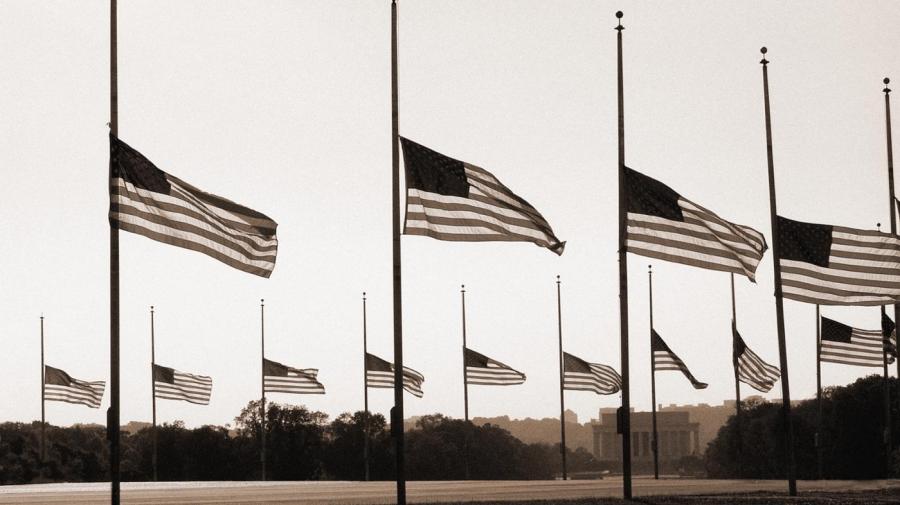When Should a Flag Be Flown at Half Mast?

Americans fly their flags at half-mast, also known as half-staff, after the deaths of dignitaries designated in the U.S. flag code and the deaths of members of the armed forces or other important officials by presidential or gubernatorial instruction. Flags also fly at half-staff during certain memorial or remembrance days.
According to the U.S. code stipulating the position and manner of display of the U.S. flag, the flag must fly at half-staff for 30 days after the death of a president or former president and 10 days after the death of a vice president, speaker of the House of Representatives, or current or former chief justice of the Supreme Court. For a former vice president, associate justice of the Supreme Court, state governor or military secretary, the flag flies at half-staff from death until internment.
For a member of the U.S. Congress, the flag flies at half-staff on the day of death and the following day. The president of the United States may order the flag to fly at half-staff after the death of an important U.S. official or foreign dignitary. State governors can order the flag to fly at half-staff to honor members of the armed forces from their state.
The flag flies at half-staff from sunrise to sunset on Patriot Day, Peace Officers Memorial Day and Pearl Harbor Remembrance Day. On Memorial Day, the flag displays at half-staff only until noon, and then it flies at full-staff for the rest of the day.





